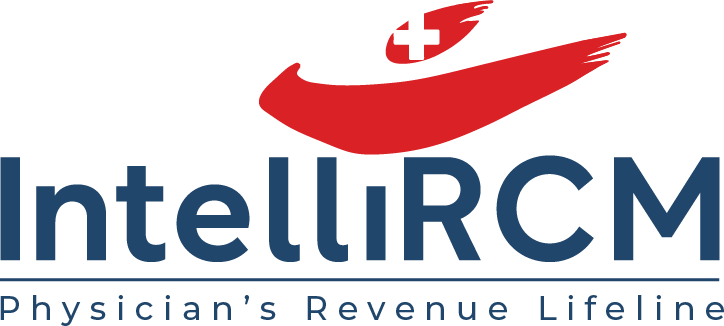
By intellircm 8th Dec 2021 Blog
The healthcare industry is viewed as a system with many interconnected elements that act as a whole. In other words, it is a complex dynamic chain consisting of many services, links, sectors, and units that need to be managed.
The RCM system is the ideal solution for tracking healthcare organization service quality, and there are plenty of reasons to start using it on a daily basis.
Keeping Track of the Financial Health of Medical Activities
Health care providers also need to take care of themselves in terms of finances to provide care to patients and grow their businesses.
Modern revenue cycle management services allow for monitoring the performance of a key business segment, identifying areas for improvement, and increasing revenue. In addition, they offer viable solutions, replacing traditional methods for cost optimization with cost-effective alternatives for monitoring any cash flow aspects.
Steps in Revenue Cycle Management
All RCM operations are interrelated, and the sequence of these steps directly affects the speed and accuracy of information processing. Therefore, the faster the steps are performed, the faster the data is verified and processed.
Charge capture
Charging for medical services is usually accomplished via two methods - automated and manual data entry. The former implies that the information is automatically transmitted to the billing system. This method is applicable for patients who are already enrolled in the system. The latter is the exact opposite of an automated system and means that the facility administration is responsible for manually entering the data at each patient visit.
Coding
The provider writes the medical notes and selects the codes based on their knowledge which could be incorrect or under level codes. Sometimes, they may not know the code of the procedure. Therefore, the coder’s job is to find appropriate codes and make sure they are billing the right level E&M codes. All the information is encrypted by a particular coding procedure in the system and sent to the insurance companies for further processing. The insurance company must process all data on diagnoses, procedures, and treatment regimens to bill and accrue the amount to cover the costs.
Claim Submission
At this stage, the clean claims must be submitted to the payers using an appropriate clearing house. The clearing house provides the report of each claim batch within 24-48 hours. These reports need to be checked and corrective action taken.
Communicating with the Insurer
When the patient contacts the clinic, the administration checks the validity of the insurance coverage. Once this check is completed, the insurance company calculates the amount of money for treatment they have to allocate and the amount that the patient must pay on their own.
Payment Collection
The insurance company pays the provider for the claims submitted on behalf of patients and sends out either an EOBs (Explanation of Benefits) or ERAs (Electronic Remittance Advice) with an explanation of payment or denials. These EOBs or ERAs need to be processed in the system against those claims to settle the patient’s account. If there is any remaining balance that needs to be transferred to the patients, it will go to the patients.
Medical Service Review
When all financial issues are closed, a detailed data analysis of the medical billing services needs to be performed to determine the correctness of all steps, eliminate errors, and possibly reduce costs.
Understanding Healthcare RCM
There are typically four players involved in the health care management system: patients, medical facilities, the insurer, and the billing company.
The process commences when a patient makes an appointment, with the next steps in the system consisting of scheduling, verifying the patient's insurance eligibility, and creating a patient account. After the appointment, each physician or clinic representative must submit an application with the patient information using the appropriate ICD-10 code.
Next, the application is forwarded to private or public insurance companies for partial or full reimbursement according to the client's insurance policy terms.
How Healthcare Providers Can be Successful in Revenue Cycle Management
Controlling the movement of income and expenses, recording financial transactions, and integrating them into the management system is an integral part of any medical practice.
The complexity of economic activity is reflected in a significant number of indicators and reports. Nevertheless, with a robust CRM system, a medical organization can easily track patient information, billing records, revenues, and expenses to maintain a decent level of financial stability.
Proper Healthcare RCM Helps Reduce Denials
The amount of health care costs lost due to fraud over the past dozen years remains unknown because such losses were not systematically measured. Consequently, the number of denials of reimbursement is on the rise as the government seeks to combat health care fraud.
One solution to prevent failures is to train medical staff to correctly enter the data into the system and encode the patient's personal records. Another solution is implementing the IntelliRCM software, which encompasses all functions associated with managing, collecting, and generating revenue from patient care.
When properly managed, reimbursement issues can be resolved more quickly, and the operational management of denials and claim resolution rates stands at about 99%.
Challenges Faced in Healthcare RCM
The health care system faces many challenges that can affect performance and efficiency. One issue is insufficient staff training to detect errors in the system early on, so it's crucial to encourage and invest in staff education to eliminate or reduce the impact of human error on the entire system.
Another challenge in the healthcare revenue cycle is the lack of adequate ability to track a claim through its whole life cycle, as the healthcare staff is mainly concentrated on treating a patient than on filling out all the forms for processing the case with the insurance company.
Therefore, delegating routine paperwork using the latest top-notch systems can be an essential step toward enhancing a medical facility's level of service.
The Role of Technology in Revenue Cycle Management
The modern technology industry is evolving and has long since penetrated all areas of human activity. With the help of high-quality RCM systems, it is possible to simplify data tracking significantly and reduce the number of potential errors and denials when applying for health insurance payments.
That is why the number of medical institutions that turn to these reliable systems is continually growing.
IntelliRCM Helps You Optimize Every Stage of Your Revenue Cycle
At IntelliRCM, we use state-of-the-art technology to provide first-class care to our clients. Our services include full support for every patient from the first step of enrollment to guaranteed insurance reimbursement.
IntelliRCMallows its clients to control the operations appropriately while recording, scheduling, and processing payments and claims.
The list of our offerings includes:
Ensuring revenue integrity to maximize reimbursement. Using analytics strategies to make better decisions. Clearing patient finances to expedite the collection process.IntelliRCM is an optimal solution for medical organizations looking to protect themselves and their patients from possible risks associated with the financial aspect of healthcare services.
Wondering how IntelliRCM can help you? Contact us today for more information!




